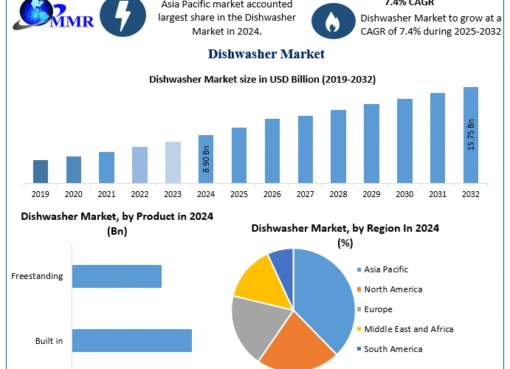How Can You Build a Stablecoin That Maintains Value?

Stablecoins are the backbone of today’s decentralized economy. They act as bridges between traditional finance and blockchain, offering the price stability of fiat currencies while preserving the decentralized benefits of crypto. But not all stablecoins are created equal. Projects like UST’s dramatic collapse in 2022 exposed how fragile these systems can be. In 2025, with stricter regulations and a savvier user base, building a stablecoin that maintains value requires more than just mint-and-burn mechanics. It demands robust design, security, governance, and utility. This comprehensive guide explores how to build a stablecoin development that truly holds its ground.
1. Understanding the Purpose of Your Stablecoin
Before diving into development, it’s vital to clarify your stablecoin’s role.
Common Use Cases:
- Payments: Low-volatility medium of exchange.
- DeFi Collateral: Securing loans, yield farming, staking.
- Remittances: Fast cross-border transactions.
- Trading Pairs: Reliable base currency on DEXs.
Knowing your audience will shape your design decisions, from stability model to compliance measures.
2. Choosing the Right Pegging Mechanism
The pegging mechanism is the foundation of your stablecoin’s value stability.
Types of Stablecoins:
a. Fiat-Collateralized (Centralized)
- Examples: USDC, USDT
- Mechanism: Each coin backed 1:1 by fiat held in reserves.
- Pros: Simple, trustworthy.
- Cons: Regulatory risk, centralized.
b. Crypto-Collateralized (Decentralized)
- Examples: DAI, MIM
- Mechanism: Overcollateralized by crypto assets.
- Pros: Trustless, decentralized.
- Cons: Volatile collateral, over-collateralization needed.
c. Algorithmic (Uncollateralized or Partially Collateralized)
- Examples: FRAX (hybrid), UST (failed)
- Mechanism: Smart contracts regulate supply based on demand.
- Pros: Capital efficient.
- Cons: Risk of depeg, hard to stabilize.
Choose based on the trade-off you’re willing to make: decentralization vs. simplicity vs. scalability.
3. Building a Collateral Management System
Collateral is the lifeline of most stablecoin models. It must be managed transparently and securely.
Key Components:
- Reserve Auditing: Third-party or on-chain transparency.
- Real-Time Monitoring: Dashboards and APIs to monitor reserves.
- Collateral Diversification: Spread risk across BTC, ETH, and stable blue-chips.
- Emergency Mechanisms: Auto-liquidation or re-collateralization triggers.
In 2025, reserve transparency is a regulatory expectation, not a feature.
4. Smart Contract Infrastructure
A secure, scalable, and upgradeable smart contract infrastructure is vital.
Technical Choices:
- Blockchain: Ethereum, Arbitrum, Solana, or Cosmos SDK.
- Programming Languages: Solidity, Rust, Cairo (for zkApps).
- Auditing: Professional audits from firms like Certik, OpenZeppelin, Trail of Bits.
- Upgradability: Use proxy patterns to allow future changes.
Key Smart Contracts:
- Mint/Burn functions
- Collateral vaults
- Price oracles
- Governance modules
5. Integrating Reliable Oracles
Price feeds are the heartbeat of pegging logic. Inaccurate data can lead to depegging or manipulation.
Oracle Options:
- Chainlink: Industry-standard, decentralized.
- Band Protocol: Lightweight alternative.
- Custom Oracles: For off-chain or niche asset pricing.
Oracle Best Practices:
- Multiple data sources
- Fallback feeds
- Anti-flashloan protection
Without reliable oracles, even the most elegant stability mechanisms fail.
6. Governance Structure and DAO Setup
A decentralized governance system ensures future-proof adaptability.
Governance Models:
- Token-Based Voting: Common but prone to whale dominance.
- Quadratic Voting: Gives smaller holders more voice.
- Council-Based DAO: Small, rotating expert committees.
On-Chain Governance Tools:
- Snapshot, Tally, Gnosis Safe, Aragon
Transparency and active community participation are essential to avoid hostile takeovers or stagnation.
7. Regulatory Compliance and KYC Options
Compliance is no longer optional in 2025, especially for fiat-backed models.
Steps to Stay Compliant:
- Licensing: Depending on jurisdiction (e.g., FINMA, MAS, SEC).
- KYC/AML Integration: On-ramps must screen users.
- Auditable Reserves: Monthly attestations or on-chain proofs.
- Geofencing: Restrict access to non-compliant regions if necessary.
Hybrid models may opt for regulated on-ramps and decentralized internal operations.
8. Incentivizing Adoption and Liquidity
Even the best stablecoin fails without real-world usage.
Adoption Strategies:
- Liquidity Mining Programs: Reward LPs for providing trading depth.
- DeFi Integrations: Partner with protocols for use as collateral.
- Merchant Partnerships: Enable real-world payment use cases.
- Staking Mechanisms: Offer yield for holding or locking stablecoins.
Incentives need to be balanced to prevent mercenary capital while encouraging sticky users.
9. Building Multi-Chain Support
Cross-chain functionality increases utility and reach.
Multi-Chain Deployment Tools:
- LayerZero, Axelar, Wormhole, Celer
Considerations:
- Consistency: Peg and supply must match across chains.
- Security: Bridges must be audited and decentralized.
- Fees: Account for varying gas costs.
More chains mean more exposure but also more complexity in supply tracking.
10. User Experience (UX) and Wallet Compatibility
Users expect seamless, intuitive experiences.
UX Essentials:
- Web3 wallet integrations: MetaMask, WalletConnect, Coinbase Wallet
- Mobile accessibility
- Gas fee optimizations (e.g., meta-transactions)
- Clear transaction statuses and help guides
In 2025, poor UX is a deal-breaker. The experience must feel as simple as using PayPal or Venmo.
11. Security and Resilience Engineering
Security cannot be an afterthought.
Security Layers:
- Code Audits: Use multiple auditors.
- Bug Bounties: Via platforms like Immunefi.
- Circuit Breakers: Pause mint/burn in emergencies.
- Monitoring Tools: On-chain alert systems.
Crisis Preparedness:
- Simulated stress tests
- FUD communication plans
- Community war rooms
Projects that prepare for black swan events survive them.
12. Real-World Case Studies: Successes and Failures
Success: USDC
- Regulated, transparent, high adoption
Success: DAI
- Community-driven, resilient even during volatility
Failure: UST
- Algorithmic, no true backing, death spiral risk
Hybrid Success: FRAX
- Adaptive collateral ratio, dynamic supply
Learn from both the wins and the losses to avoid costly mistakes.
13. Community Building and Transparency
A strong community defends against rumors, spreads awareness, and attracts partnerships.
Strategies:
- Weekly AMAs
- On-chain data dashboards
- Community grants for contributors
- Educational content
Your community is both your shield and your brand ambassador.
14. Future-Proofing: Evolving Beyond Just Pegging
A stablecoin should be a platform, not just a product.
Vision for Expansion:
- Programmable Stablecoins: Add conditional logic (e.g., salary payments).
- Privacy Features: ZK-enabled transactions.
- Yield Integration: Native savings accounts like Anchor (but safer).
Think beyond the peg. Create layers of value.
15. Final Checklist Before Launch
Launching is just the beginning. Sustaining value is the real mission.
Final Thoughts
Building a stablecoin in 2025 isn’t just about creating a token pegged to a dollar—it’s about engineering a trust machine. From the math behind algorithms to the psychology of communities and the nuances of regulation, every component plays a part. By following a careful, layered approach—technical, social, and economic—you can develop a stablecoin that holds its value, earns user trust, and adapts to the future of decentralized finance. In a market flooded with coins, real stability is the ultimate differentiator.






Leave a Comment